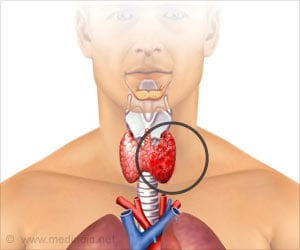Living near high-voltage power lines raises risk of childhood cancer, says a new Chinese study. But many are skeptical.
Living near high-voltage power lines raises risk of childhood cancer, says a new Chinese study. But many are skeptical.
A Chinese group have just published a paper in the journal Leukemia and Lymphoma, claiming that a genetic polymorphism in the XRCC1 gene, which has been previously linked to various cancers, raises the risk of electromagnetic field (EMF)-related leukemia.The defective gene quadruples the risk of cancers of the blood and bone marrow for carriers who live within 330ft of an overhead cable.
The discovery could help explain the findings of a Government-funded study published three years ago in the UK.
It had concluded that children who grew up near high-voltage power lines were, on average, almost 70 per cent more likely to be diagnosed with leukaemia than those living further away.
Previous studies have suggested that exposure to the electromagnetic fields (EMFs) created around power lines can cause damage to the DNA, or genetic blueprint, of animal cells.
The Chinese research shows that one in 20 children inherits a faulty copy of a gene that normally helps repair DNA damage, making them more vulnerable to developing leukaemia when young.
Advertisement
Alasdair Philips, who runs the campaign group Powerwatch, said: ‘Previous studies have shown a clear association between childhood leukaemia and EMFs from power lines.
Advertisement
‘In the meantime, the Government should implement a five-year building moratorium to keep homes and schools at least 200ft away from power lines.
Last Wednesday, Health Minister Dawn Primarolo was due to meet Housing Minister Iain Wright and Energy Minister Mike O’Brien to discuss the Government’s response to the conclusions reached by the expert committee last year, but the meeting was postponed ‘due to a busy parliamentary timetable’.
Chantelle Roberts of the charity Children With Leukaemia said: ‘The risk of childhood leukaemia associated with EMFs from high-voltage power lines cannot be ignored.
‘The Government should act now to ban the building of new houses under high-voltage power lines to protect children’s health.’
Louis Slesin, editor of Microwave News, a US website that reports on EMFs and their health risks, said: ‘The study will need to be repeated, but it is like finding the missing piece of the jigsaw.’
But there are those who find serious flaws in the research methodology of the Chinese group.
The authors took 123 childhood leukemia patients living near Shanghai. They took blood samples for DNA analysis and asked the parents to report on a wide range of possible environmental risk factors.
Questions on environmental exposure covered pregnancy and the period from birth to diagnosis and detailed information including: Was there a television set/refrigerator/ microwave oven in the children’s rooms? Did you regularly use insecticides at home? Did you use gardening chemicals such as, fertilisers, herbicides, insecticides, fungicides, others? Were there chemical factories/telecommunication transmitters/electric transformers/power lines around your house?
Relying on self-reports like this raises the risk of recall bias, it is pointed out. Besides, there is another problem too.
The authors genotyped the children for six different SNPs (genetic variants) which have been previously implicated in cancer.
Any statistical comparison has a chance of giving a positive result just by chance. If you do enough comparisons, you will find something, just by chance, points out Neuroskeptic, a blogger.
The authors do not report making an attempt to correct for this (although there are plenty of ways of doing so). They never even acknowledge the problem. They simply report on their only positive result - an association between the XRCC1 risk allele and "proximity to electrical transformers and power lines" - and relegate all the negative results to a brief summary.
No significant interactions between the proximity of the electric transformers and power lines and other genotypes were observed. No significant interactions were observed between genotypes and the presence of television sets, refrigerators or microwave ovens in children’s rooms, pesticides use or the presence of chemical factories or telecommunication transmitter within 500 m of the houses.
The positive result was that out of the children with leukemia, those living within 100m of electrical transformers and power lines were more likely to carry the XRCC1 risk allele than those not living within this proximity. Those living within 50m were slightly more likely than that. Under the assumption that genotype is not correlated with environment in the general population (a reasonable assumption, and they did test this in a control sample), this indicates a very low leukemia / lymphoma risk.
One such result from what seems like at least 42 such comparisons is not especially impressive. It's certainly not proof of an interaction between XRCC1 and EMF, it's not even "suggestive evidence," it's at best a prompt for further research but to be honest, it's almost meaningless.
“I think that this is especially bad example of the problem of multiple comparisons and a tragic case of sloppy science which could end up having serious consequences for health, in terms of acting as a red herring distracting from more valuable research,” warns Neuroskeptic, a UK-based neuroscientist himself.
Source-Medindia
GPL/SK






